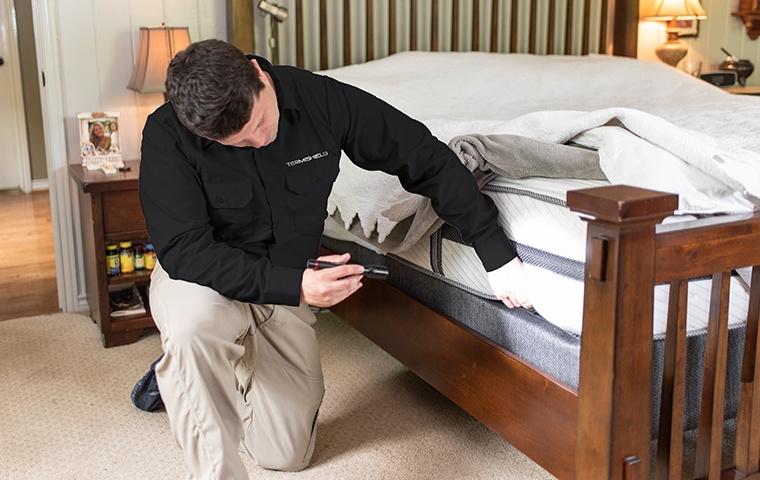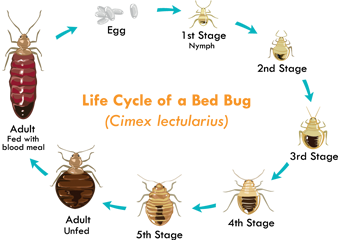Relied On Kings Pest Control Cincinnati OH: Expert Services
Relied On Kings Pest Control Cincinnati OH: Expert Services
Blog Article
Sorts Of Parasite Control: Which Approach Is Right for Your Infestation?
When confronted with an insect invasion, the selection of an ideal approach for parasite control is critical in properly handling the circumstance. From chemical therapies to biological services, there exists a range of techniques that can be used to resolve different kinds of parasites. Each approach includes its own set of considerations and advantages, making the decision-making procedure a nuanced one. Comprehending the subtleties of each method and evaluating their compatibility with the certain parasite invasion handy is crucial for accomplishing lasting success in insect administration. By exploring the various types of pest control approaches available, individuals can make enlightened decisions tailored to their special scenarios, guaranteeing a more effective and sustainable end result in bug removal.
Chemical Pest Control
Chemical parasite control includes the use of synthetic or naturally derived chemicals to take care of and get rid of pest populations effectively. This approach is commonly used in agriculture, forestry, and domestic settings to combat a vast array of insects, including rodents, weeds, and insects. Using chemical pesticides can provide quick and targeted options to pest problems, making it a prominent choice for several individuals and services.
Among the vital advantages of chemical insect control is its capability to swiftly get rid of insects, lowering the threat of damages to crops, building, and human wellness. By utilizing particular chemicals that target particular insects, this approach can properly control invasions while decreasing harm to helpful organisms and the atmosphere when applied properly.
However, using chemical parasite control also raises issues regarding potential adverse impacts on non-target varieties, water sources, and human health and wellness. It is crucial to comply with security standards, use chemicals sensibly, and take into consideration alternate bug control approaches to decrease these risks and make certain lasting insect administration practices.
Biological Parasite Control
Biological bug control, also understood as biocontrol, uses living microorganisms to reduce and manage insect populaces normally. This technique takes advantage of the power of nature to regulate bugs without the need for artificial chemicals. Biocontrol can include the intro of all-natural enemies of the insect varieties, such as killers, pathogens, or bloodsuckers, to reduce insect populaces. By utilizing the insect's all-natural predators or pathogens, biological insect control uses a ecologically friendly and sustainable solution to pest management.

Mechanical Insect Control
Making use of hands-on and physical approaches to take care of pest populations, mechanical insect control uses a different method that does not rely on using living microorganisms or synthetic chemicals. This approach involves the usage of obstacles, traps, or other gadgets to literally hinder or get rid of insects. By blocking insect entrance points or establishing up traps to catch them, mechanical parasite control can successfully lower problems without presenting chemicals into the environment.
One common instance of mechanical parasite control is the use of mesh screens on doors and home windows to avoid pests from getting in Kings Bed bug exterminator Cincinnati structures. This simple yet effective technique acts as a physical barrier, maintaining pests out while enabling appropriate ventilation. Furthermore, devices like mousetraps, fly swatters, and ultrasonic repellents drop under the mechanical bug control category.
While mechanical insect control techniques can be labor-intensive and require routine surveillance and maintenance, they supply a sustainable and environmentally friendly remedy for handling bug infestations. By combining different mechanical methods, residential or commercial property proprietors can create a detailed pest control method that lessens reliance on chemical pesticides.
Physical Parasite Control

Some common physical bug control methods include making use of barriers such as internet or screens to stop parasite entry, traps to catch and remove bugs, and hand-picking to physically get rid of parasites from plants or frameworks. In addition, strategies like heat treatments can be made use of to regulate insects like bed insects by increasing the temperature level to levels that are deadly to the insects.
Physical pest control is specifically valuable in incorporated bug management (IPM) techniques, where several bug control approaches are incorporated for effective insect administration while lessening making use of chemicals. By utilizing physical insect control techniques, individuals can successfully address insect invasions with marginal ecological influence.
Integrated Parasite Administration
When implementing physical bug control techniques as part of pest management strategies, Integrated Pest Administration (IPM) arises as an extensive method that leverages various methods to successfully control pest populaces. IPM concentrates on long-term avoidance of bugs with a mix of organic, cultural, physical, and chemical tools tailored to specific insect issues. By integrating several control methods, IPM intends to lessen the risks related to bugs while additionally decreasing reliance on chemical solutions.
One secret facet of IPM is the emphasis on surveillance and examining pest populaces to establish the most suitable control techniques. This aggressive strategy permits very early treatment and targeted strategies, causing much more efficient insect management. In addition, IPM promotes eco-friendly techniques by focusing on non-chemical control approaches and just utilizing chemicals as a last resort.
Verdict

By making use of the bug's all-natural killers or virus, organic insect control supplies a sustainable and environmentally friendly solution to pest monitoring. - Kings pest control Cincinnati
Making use of physical and hands-on approaches to take care of pest populaces, mechanical bug control offers an alternative strategy that does not rely on the usage of living organisms or synthetic chemicals.An effective approach to handling insect populaces without relying on chemical or biological techniques entails the usage of physical parasite control techniques.When applying physical pest control methods as component of pest monitoring techniques, Integrated Insect Monitoring (IPM) arises as a comprehensive technique that leverages different techniques to successfully regulate pest populations. Chemical pest control entails the usage of chemicals, biological bug control utilizes natural predators, mechanical insect control includes physical obstacles, physical insect control consists of capturing or removing parasites, and incorporated bug monitoring incorporates numerous techniques for an alternative strategy to pest control.
Report this page